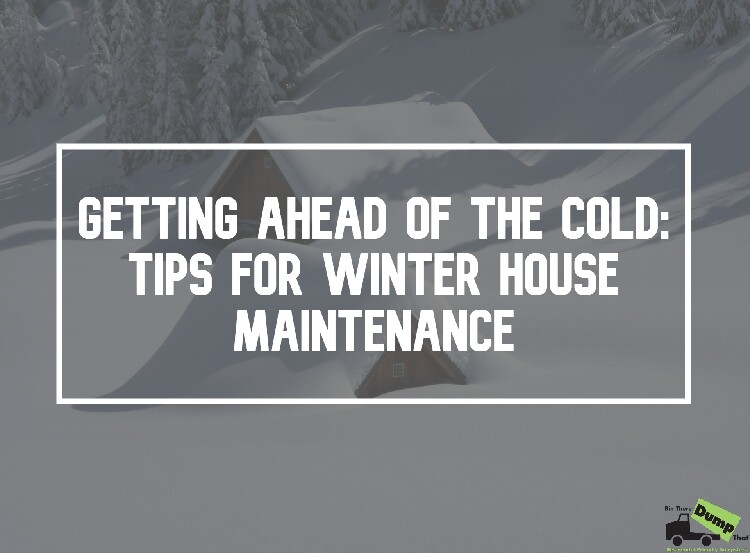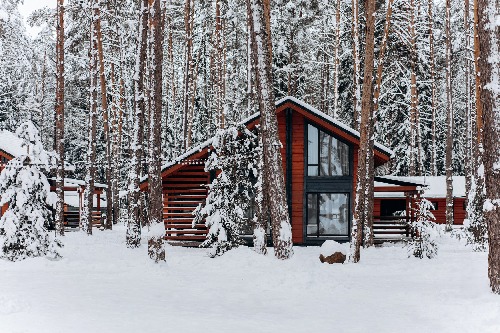
The fun of winter and holidays is easily spoiled by the chaotic aftermath of a burst pipe. The joy of snow days can turn tragic if an accidental fire sets your house ablaze and the dead battery in your smoke detector was to blame for no alert. These are all possible scenarios, though one often thinks: ‘it cannot happen to me.’ Certainly, we cannot prevent the usual breaks and leaks in our house, but we can stop real damage from occurring simply by being conscious of a few necessary tips to keep your home safe in the winter.

Although it seems obvious, the somewhat tedious and laborious task of checking for cracks in between windows, doors, and walls are often put off for far too long. Allowing the sneaky weather inside your home may very well increase the chances of a burst pipe and certainly a high energy bill.
Before winter weather settles in check around your windows. If you get your windows cleaned professionally, directly after their visit would be an ideal time to check, while the windows are sparkling clean and the damage is easier to spot. Remove the old caulk and put in new caulk, making sure that all cracks are sealed. You might need to buy a caulk gun for this. Homeowners often choose from latex or silicone caulk. It’s also wise to determine whether any panes are in disrepair and could use replacement. You can DIY repairs yourself, but a professional contractor can handle the job quickly and efficiently.
As a home or business owner, you’ll likely have pipes on your mind far more than you would desire. The best way to avoid this is by effectively insulating them. As the New York Times reports bad insulation is worse than no insulation. They warn against leaving blank spots especially around elbows and T’s. For these are the tricky little spaces where ice likes to form.
As Pro Builder suggests, learn the pros and cons of various types of insulation. A few options include rubber insulation, polyethylene foam, and foil and foam insulation, which is the simplest way to insulate. This is especially important in pipes that are located in crawl spaces or on exterior walls.
Most house fires happen in winter, according to the American Red Cross. Three of five home fire deaths happened in homes with non-working smoke alarms. This could be due to dead batteries or accumulated dust in the sensor. A working carbon monoxide detector is equally important as the odor is often not noticed until it is too late.
First and foremost install smoke detectors in all levels of your house. Make sure to test the batteries at least once a month by pressing the button. Replace every six months or so. Have members of your family know or consider an escape plan or emergency plan. As Today reports, one way to ensure the proper functionality of the smoke detector is to do the candle test. Light a candle and blow it outright by the smoke alarm. It should go off. They recommend switching detectors out every ten years.

The furnace is the heart that keeps your house warm. Being aware of proper and easy maintenance can help your furnace run more efficiently for a longer period of time. This can save you in energy bills and replacement/repair later.
This Old House recommends performing furnace maintenance as Fall weather is setting in. You want to clean the system of dust and also ensure a clean filter. Different kinds of furnaces will have different systems, but generally, you want to replace the filter. Certain filters will accumulate dust and this will prevent the air from going through, working your furnace much harder than it needs to.
If you don’t currently have a garage or shed, then you may end up leaving all of your lawn maintenance equipment in the yard all year long. However, in climate weather can wreak havoc on things like lawnmowers when they’re exposed to the elements. And while a tarp can definitely help provide some protection, it won’t solve the problem altogether.
Consider investing in a small shed to store your lawn and garden equipment. Not only will it provide you with additional storage, but it will also keep your equipment safe and sound when the weather turns bad. If you don’t have room for a shed, it may be time to reorganize your garage. Clean out anything you don’t want, need or that can be trashed. Bear in mind that if you’re disposing of paint, it’s important to follow best practices and check with your city’s restrictions. Next, look for storage options that work for your garage, whether that’s through vertical metal shelving or overhead storage.
You may be familiar with the proverbial and often cautionary adage of Murphy’s Law. “Anything that can go wrong, will go wrong.” Homeowners are all too familiar with this sentiment, as the responsibilities of upkeeping your home can often be overwhelming. It seems things break and go wrong for no reason. Murphy’s law, however, need not apply if you take into account what can go wrong and use preventive measures. This will help your chances of avoiding unnecessary “wrongs” and it will most definitely help your wallet.
Friendly, professional customer service, plus fair pricing, equals value.